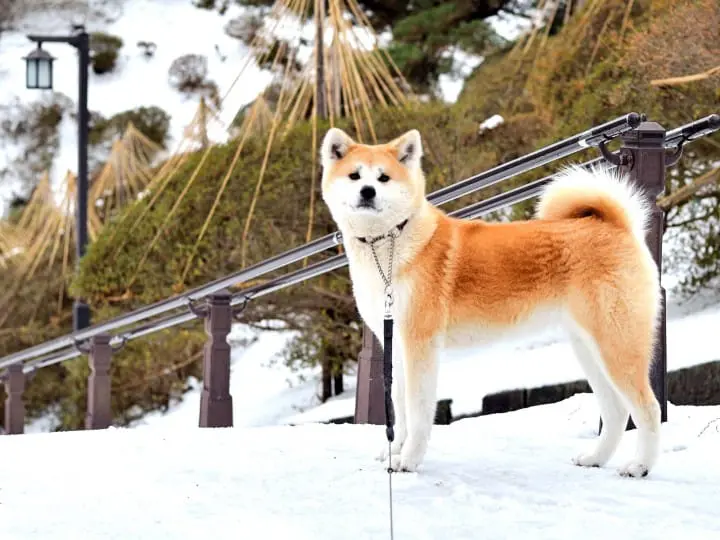Setsubun: A February Event Celebrating the Arrival of Spring in Japan

On the day of the Setsubun, which marks the transition from winter to spring, it is customary to throw beans out the door to ward off evil, in an event called mame maki.
Setsubun is the word for the interval between seasons. Spring, summer, autumn, and winter all have their own setsubun at the change of seasons, but in Japan the Setsubun between winter and spring is customarily the most important.
Setsubun generally refers to the day before the first day of spring, which is known as risshun. In 2025, Setsubun falls on February 2.
Japan's Setsubun Festival

Photo by Pixta
The Setsubun celebrated by the Japanese people nowadays means, as noted above, the transition from winter to spring. To have made it through a tough winter and see the coming of spring is just as worthy of celebration as greeting the new year.
It is also said that the change of seasons brings with it 'jaki' (evil spirits and other evil things), and it is important to ward these off on this day in order to mark a new beginning.
"Oni wa Soto! Fuku wa Uchi!"

In Japan, there is the belief that misfortunes such as natural disasters, plagues, and starvation are caused by oni (demons). Oni are somewhat similar to Western ogres and demons.
For this reason, during Setsubun, people chase around someone dressed as an oni shouting "Oni wa soto! Fuku wa uchi!" ("Demons out! Good fortune in!") and drive "the evil" off by attacking it with roasted soybeans, known as daizu or mame in Japanese.
This custom is known as mame maki. In ancient Japan, daizu beans were thought to have the power to drive off evil spirits.
The idea of warding off evil spirits that try to enter people's homes during Setsubun is said to have been passed on from ancient China. Playing out the scenario of throwing beans around while calling on good fortune is a way to pray for good health for the rest of the year.
The Rules of Mame Maki

Photo by Pixta
The daizu beans thrown at the oni must be roasted, and once the event is through, the beans should be gathered and the place should be properly cleaned up. This is because it was considered unlucky if a bean left out should sprout.
Moreover, the oni come at night, that is why you should sprinkle the beans at night when the whole family is at home.
Once all of the entrances and windows are opened, the head of the household yells "Oni wa soto!" and throws beans. Then he or she closes all the windows and doors yelling "Fuku wa uchi!" and starts spreading the beans again.
In the end, you eat the number of beans that count your age plus one, while praying to stay healthy for the rest of the year.
Additionally, in western Japan, people eat a special type of rolled sushi called ehomaki instead of performing mame maki.
Places to Visit on Setsubun

On the day of the Setsubun, mame maki events are held at shrines and temples countrywide.
There are famous places in every region where this kind of events are being held, for example, the Gojoten Shrine in Tokyo, where the event is held in accordance with ancient rituals, the Yoshida Shrine in Kyoto, or the Susa Shrine in Shimane, where they perform a ritual called "chinowa kuguri" (the rite of passing through a grass ring which is thought to purify the body and soul) and kagura (dances dedicated to the Shintō deities).
There are also many temples that hold events on the day of Setsubun. However, because it is believed that there are no oni (demons) in temples, you might hear only the cry of "Fuku wa uchi!" on its own.
We particularly recommend Sensoji Temple in Tokyo's Asakusa and Naritasan Shinshoji Temple in Chiba, which are easy to access and often have celebrities or sumo wrestlers participating in their events.
If you're going to come to Japan at this time of the year, you should definitely experience a mame maki event and draw in some good luck!
This is the official account of MATCHA's editorial department. Our articles feature useful travel information for visitors to Japan, from how-to guides to recommended places to visit.










































![[Coupon Available] Attention Overseas Winter Sports Fans! Nagano's Sports Depot Has Evolved](https://resources.matcha-jp.com/resize/720x2000/2026/01/05-254819.webp)
![[2 hours from Tokyo ] 10 Quiet and Breathtaking Views of Mount Fuji in Yamanashi Hokuto City , Yamanashi - Part 2](https://resources.matcha-jp.com/resize/720x2000/2025/12/16-253037.webp)